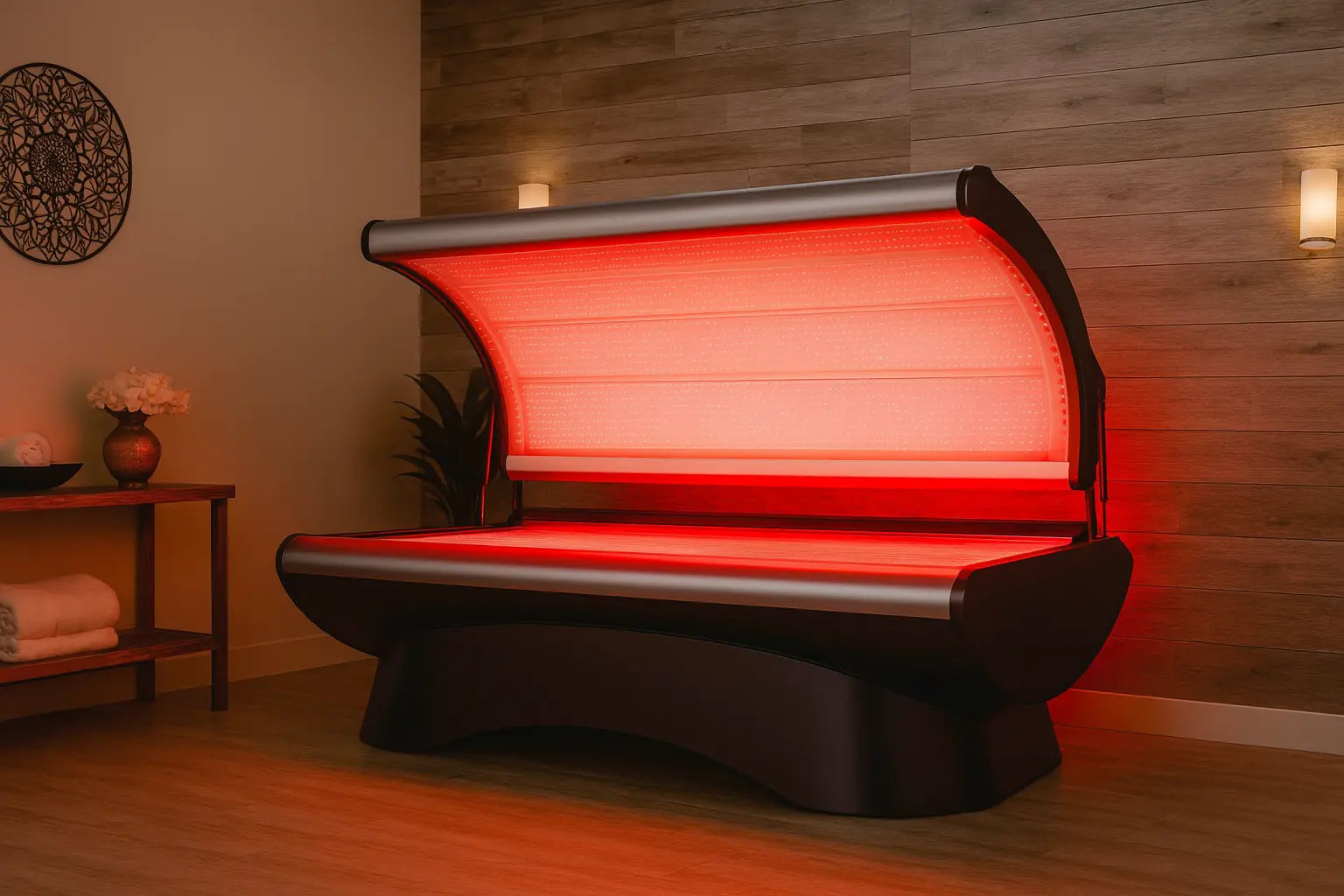How Does Red Light Therapy Work
The Powerhouses of The Cell
Within our cells, we have small structures called mitochondria. Much like the photosynthesis process in plants, these structures soak up light and convert its energy into cellular fuel.
ATP Fuel Boost
When red/NIR light shines through the body, it interacts with the mitochondria, stimulating the production of Adenosine Triphosphate (ATP), which is the primary energy currency in our bodies.
Improved Cellular Function
So, increased ATP production means there’s more energy within each cell. A cell with high energy is better able to perform its specialized functions, repair itself, and replicate.
The Ripple Effect
This process stimulates collagen production, improves blood circulation, and reduces inflammation, causing a ripple effect that enhances overall health and contributes to faster healing.
Deep Tissue Treatments
Due to its penetration range, red/NIR light is used in deep tissue treatments to promote muscle recovery, boost skin rejuvenation, and relieve pain, improving general well-being and physical performance.
Enhanced Muscle Performance & Recovery
Red light supports overall physical wellness by promoting relaxation and balance in the body, helping you feel more refreshed and ready to move after activity.
Valo's Exclusive R+|NIR+ Light Spectrum
This spectral output has been perfected for human therapy use by emitting an output that matches as close as possible to the body's own coefficient of spectral absorption.

Anti-Aging
Research shows that treatment stimulates collagen production, which can
slow down the aging process and in some cases even cause more
youthful-looking skin.

Reduced Inflammation
Red light therapy treatment reduces inflammation, thus helping treat a
wide variety of conditions that can be exacerbated in an over-inflamed
cell environment.

Improves Sleep Quality
Red light therapy helps support healthier sleep by encouraging relaxation and balancing the body’s natural circadian rhythm, creating an optimal environment for deeper, more restful sleep and easier recovery during the night

Pain relief
Consistent red light therapy use relieves pain in the body, including muscle pain from exercise, nerve pain, joint pain, and others. This is caused by an increase in the rapidity of energy production in the cells as a result of RLT stimulation.
Red vs Near Infrared Light
Red Light:
Red light, which is visible to the human eye, has wavelengths ranging from 600 to 700 nanometers (nm). It primarily works on the surface of the skin, helping to improve skin health, boost collagen production, and support hair growth.
Near-Infrared Light:
Near-infrared light is invisible to the human eye and has wavelengths between 700 and 1200 nm. It penetrates deeper into the body, targeting muscles, joints, and bones to aid in recovery and reduce inflammation.


Modern Humans are "Mal-Illuminated"
Light is essential for human health and supports many biological functions throughout the body. The sun’s spectrum includes ultraviolet (UV), visible, and infrared light, each with its own unique benefits. For instance, UVB light is crucial for the production of vitamin D, while blue light helps regulate our internal body clock, known as the circadian rhythm.
Despite its importance, modern lifestyles limit our exposure to natural sunlight. We spend most of our time indoors, whether at home, in transit, or at work, which reduces the positive impact that sunlight has on our well-being.
Modern Humans are Red and Near Infrared Light Deficient
Most modern indoor lighting, including LED and CFL bulbs, lacks the beneficial wavelengths found in red and near-infrared light. On top of that, the intensity (irradiance) of typical indoor light is much lower than what we get from natural sunlight, even on overcast days.
Energy-efficient windows in homes, offices, and vehicles also block a significant portion of these helpful wavelengths. As a result, our shift to indoor living over the past century has led to a dramatic reduction in daily exposure to light that plays a vital role in health and cellular function.










